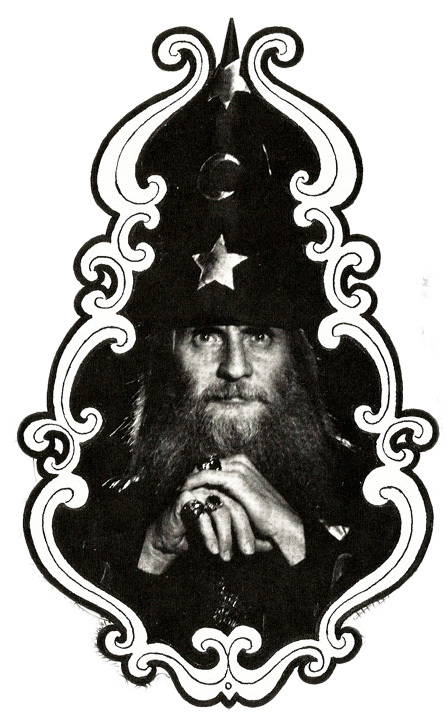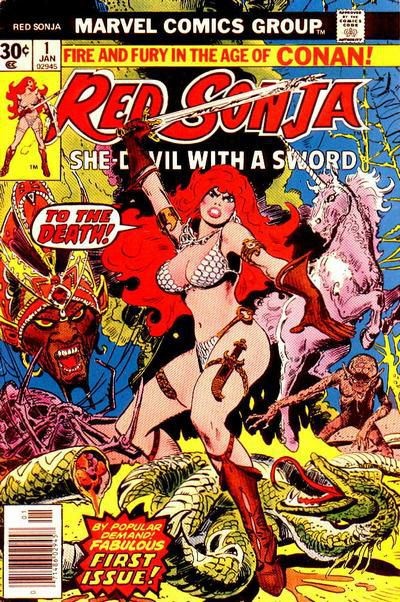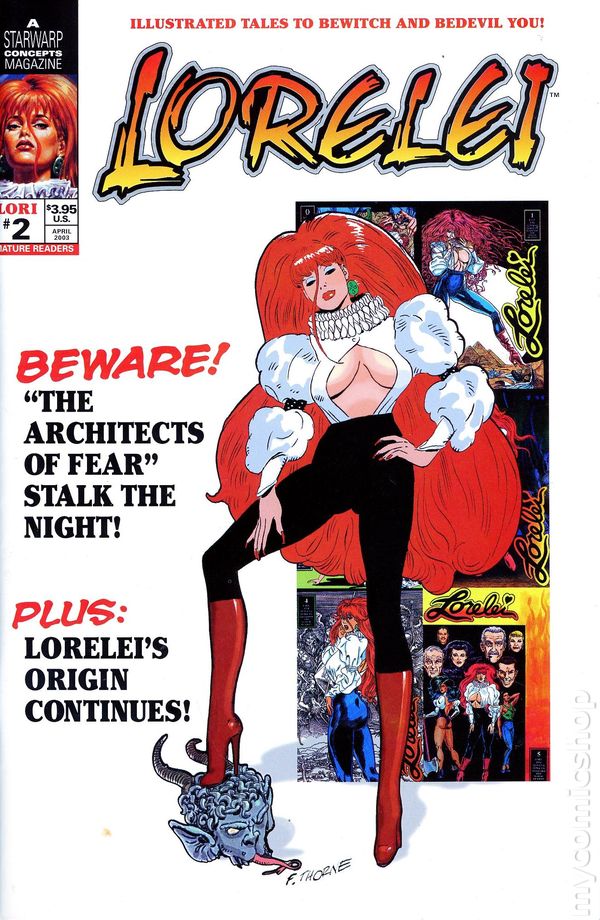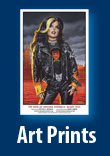News broke late Sunday night, March 7, that legendary artist Frank Thorne—the man who made Robert E. Howard’s Red Sonja, the She-Devil With a Sword, the iconic, memorable character she became during her days at Marvel Comics—had died at the age of 90; a death made even more shocking by the report that his beloved wife, Marilyn, had also passed away just a few hours after her husband.

Thorne never reached the mega-heights of popularity in the comics industry—superheroes had never been his thing, so his name wasn’t as recognizable as those of such peers as Jack Kirby, John Romita, John Buscema, Steve Ditko, Neal Adams, or Gil Kane—but he did stake his claim in comics history as the artist of a second-tier Marvel Comics character who’s still known today to legions of comic fans: Red Sonja.

Curvier and far sexier than the average mainstream comic-book heroine, dressed in little more than a chain-mail bikini (actually designed by artist Esteban Maroto) and wielding a whole lot of self-confident attitude like a weapon, Thorne’s version of Sonja became the standard for sword-swinging babariennes. In fact, his Sonja was so sexy that it ultimately created problems for him with Marvel’s editors, to the point that he quit the company at the height of his (and Sonja’s) popularity and moved over to Warren Publishing—the home of another underdressed heroine, the outer-space bloodsucker Vampirella—where he created his own “mature readers” (in other words, fairly pornographic) she-devil: the blond-haired but equally half-naked Ghita of Alizarr, who appeared in the pages of 1984 (later 1994) magazine.
Thorne never returned to mainstream comics—he was having too much fun being comics’ dirty old man!—but he kept making the kinds of comics he wanted to make, and his fans were always eager to see his next project. Not that his work on Red Sonja was ever forgotten: right up to the present day it’s his version of Sonja that remains first and foremost in fans’ minds whenever they think of the character.
Thorne’s work on Sonja served as a major inspiration for me, a fledgling cartoonist who’d been trying to find a style for himself. I’d started out emulating things like Archie comics and Harvey Comics (Casper the Friendly Ghost, Spooky the Tuff Little Ghost) because they were somewhat simple enough to try and get a hook on, but it was Thorne’s “Sonja face”—which, really, was the same face he drew for all his lead heroines—that really opened my eyes because it was something I could actually get close to imitating.
Want proof of that? Look no further than my digital comics Lorelei: Genesis and Heroines and Heroes! Even more, check out this blog post from 2014, where I tell the story of taking a one-day art class that Thorne taught at an NYC comic book convention in 1988. The class’s title? “How to Draw Women the Frank Thorne Way”!

In 2001, I had the pleasure of being put in touch with Mr. Thorne by one of his friends/fellow comic legends: the late, great Gray Morrow. One phone call later, Mr. Thorne had agreed to provide cover art for what would then become Lorelei, Vol. 2 #2. Considering how much of a fan I was (and still am) of his art, I couldn’t have been more thrilled to have the artist whose style has been a major influence on my own do a cover for my first comics character.
So, thank you, Mr. Thorne, for the inspiration and for all the great art. And thank you, Mrs. Thorne, for having the patience of a saint to put up with being married to comics’ dirty old man! 🙂






